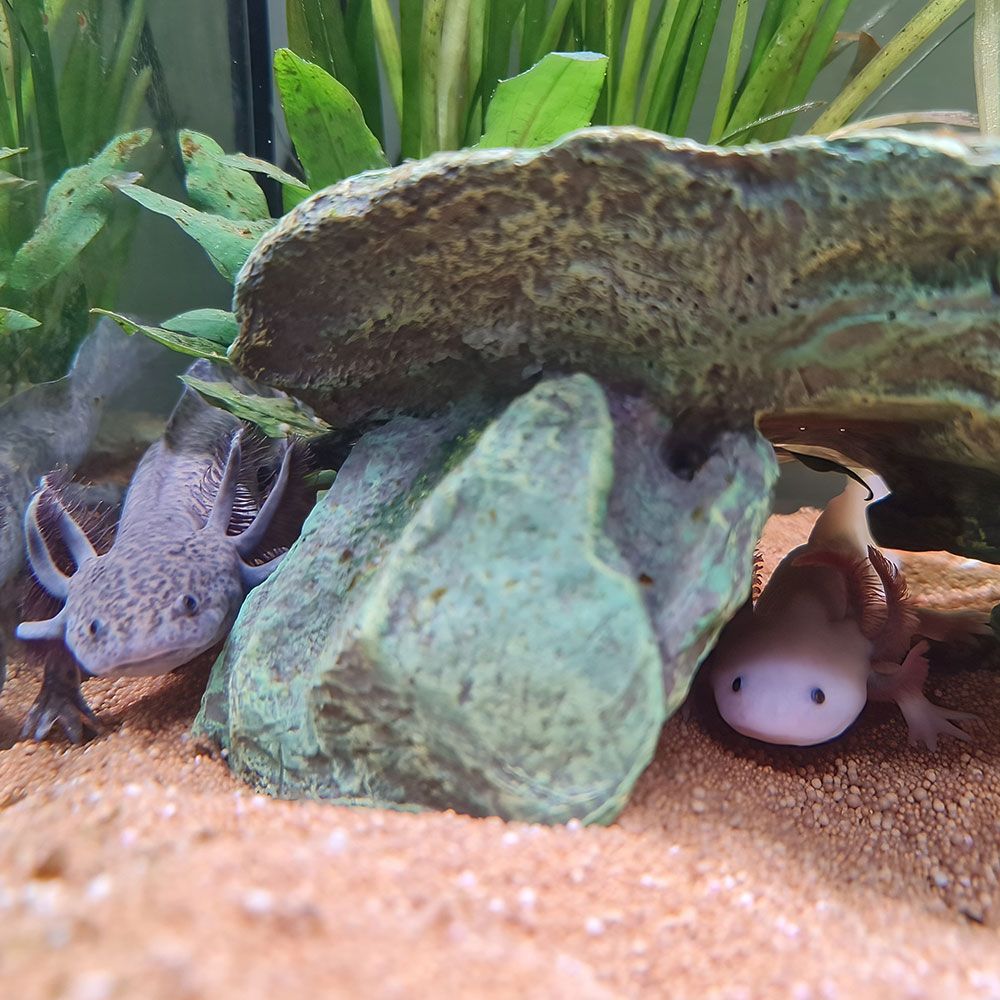Axolotls are salamanders often mistaken as “fish” because of their name: Mexican walking fish!
These creatures have a consistent smiling face, expressive gills, and an incredible power to regenerate like a superhero.
Though these carnivorous amphibians thrive in captivity and are popular as pets – they’re critically endangered in their natural habitat in Lake Xochimilco, Mexico.
With proper care, they can live up to 10-15 years and become a fascinating choice for pet enthusiasts and researchers alike.
But before you pick one, you should know that there are SO MANY types of them! So, buckle up to know the some of the most popular ones and rare ones!
Which Colors do Axolotl Have?
In the wild, these creatures are brown and tan with gold speckles that help them stay hidden from predators. But currently, various color morphs of axolotls are formed by altering color or appearance with genetic mutations occurring naturally or through lab intervention.
In fact, axolotl colors come from pigment-producing cells called chromatophores, each with specific pigments.
There are three natural pigments:
- Eumelanin is contained in melanophores and is responsible for black and brown pigmentation in axolotls, which creates dark skin tones.
- Xanthophores are filled with carotenoids from their diet and produce yellow pigments known as pteridines. This adds vibrant yellow hues to their appearance.
- Iridophores form reflective layers and contribute to camouflage and iridescence in axolotls due to the color pigments of crystalline purines.
Some axolotls are also introduced with a fourth pigment: Green fluorescent proteins that make them glow neon green under UV light.
What are the Different Types of Axolotl Morphs?
There are various different types of color morphs available for Axolotl. Let us take a closer look at them below:
1. Black Melanoid Axolotl
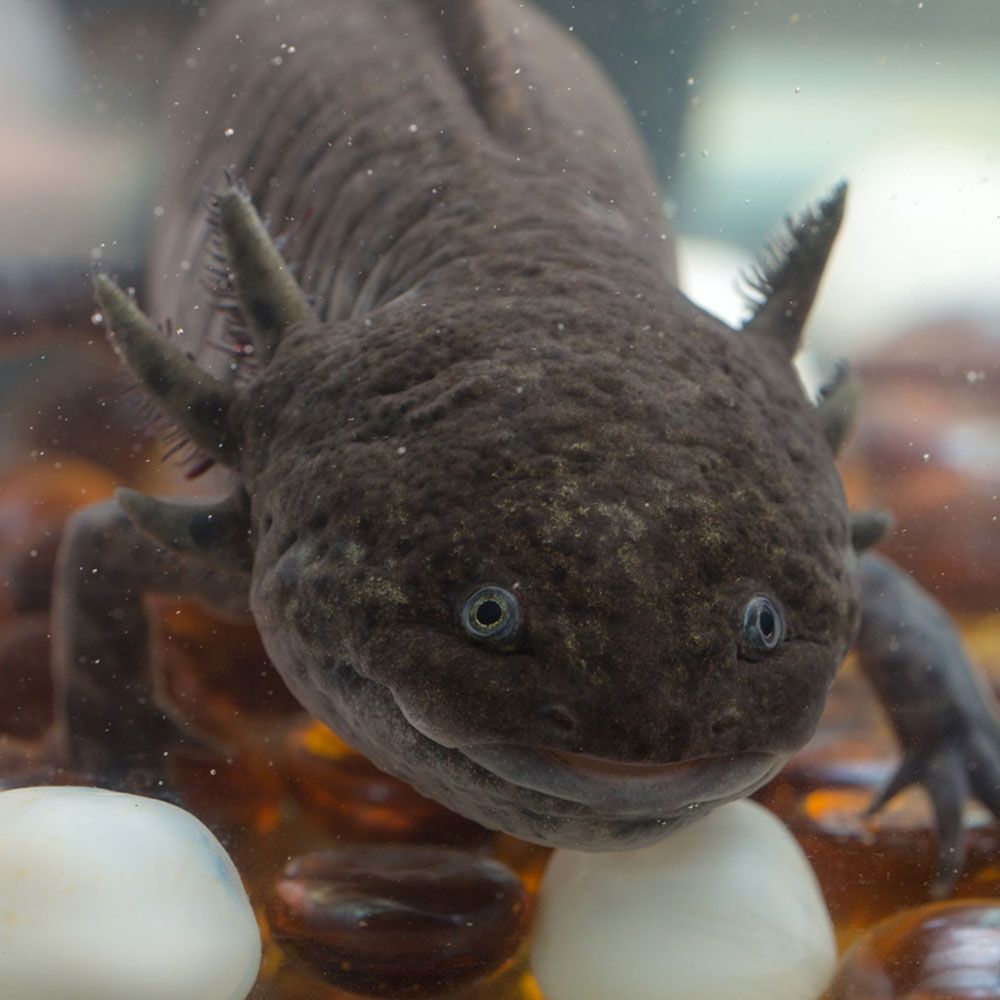
Black axolotls, aka black melanoid axolotls, are a type of melanoid axolotls. These stand apart due to their heavy black pigments. They are a naturally occurring color mutation discovered in 1961.
The color results from a unique gene-producing eumelanin pigment. This genetic mystery fascinates scientists and genetics enthusiasts.
Unlike albino axolotls, they lack iridophores, making their skin all black. They sometimes have a dark green hue and purple gills.
Most black melanoid axolotls have a black, grey, or blue belly. Some also have black gill filaments and eyes.
2. GFP Axolotl
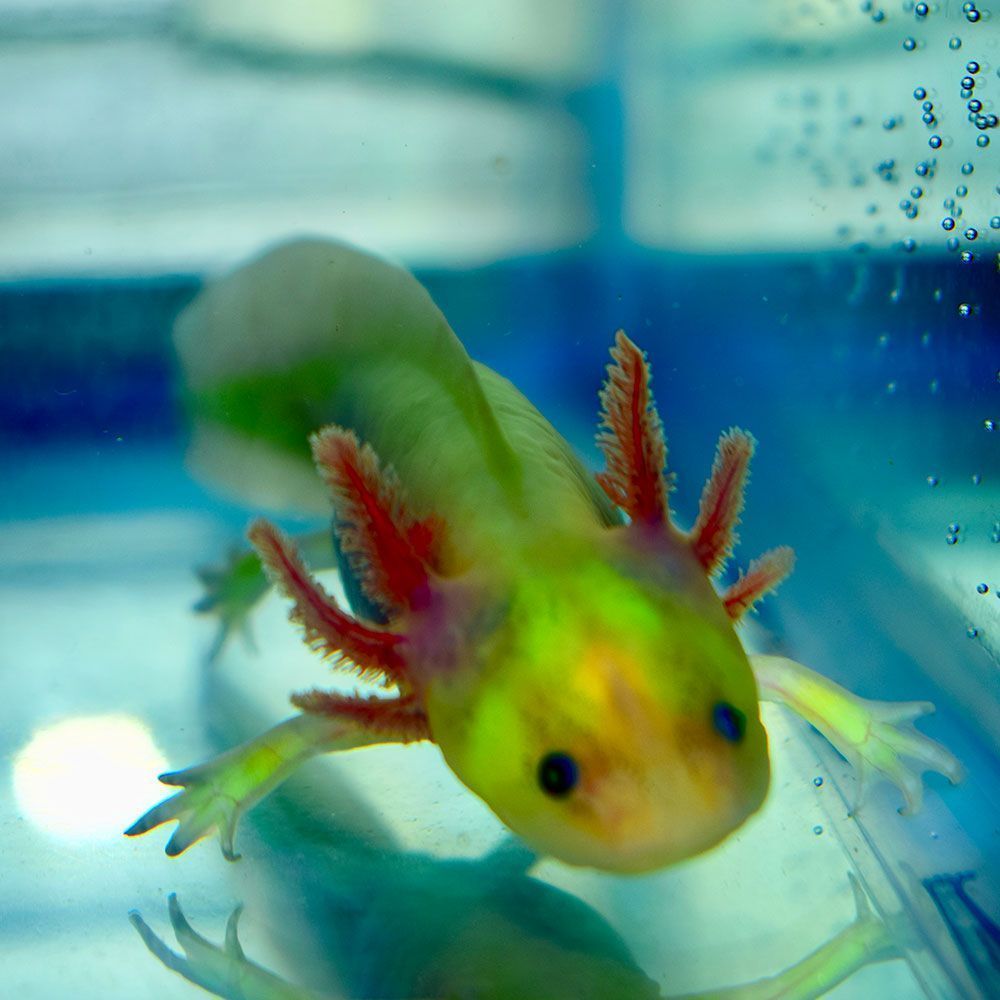
GFP axolotls, also known as Glowmanders, are genetically modified axolotls expressing green fluorescent protein (GFP), which was discovered in jellyfish in the 1960s.
Scientists like Elly M. Tanaka used GFP in axolotls to study their regenerative abilities, especially limb regrowth in mutants.
They grow 10-18 inches long. Normal light shows them as white, grey, or golden, but they glow vibrant green under UV light due to the genetic alteration.
This fluorescence is more prominent in albino or leucistic axolotls with lighter skin. Any axolotl morph can carry GFP genes, making them unique.
3. Albino Axolotl
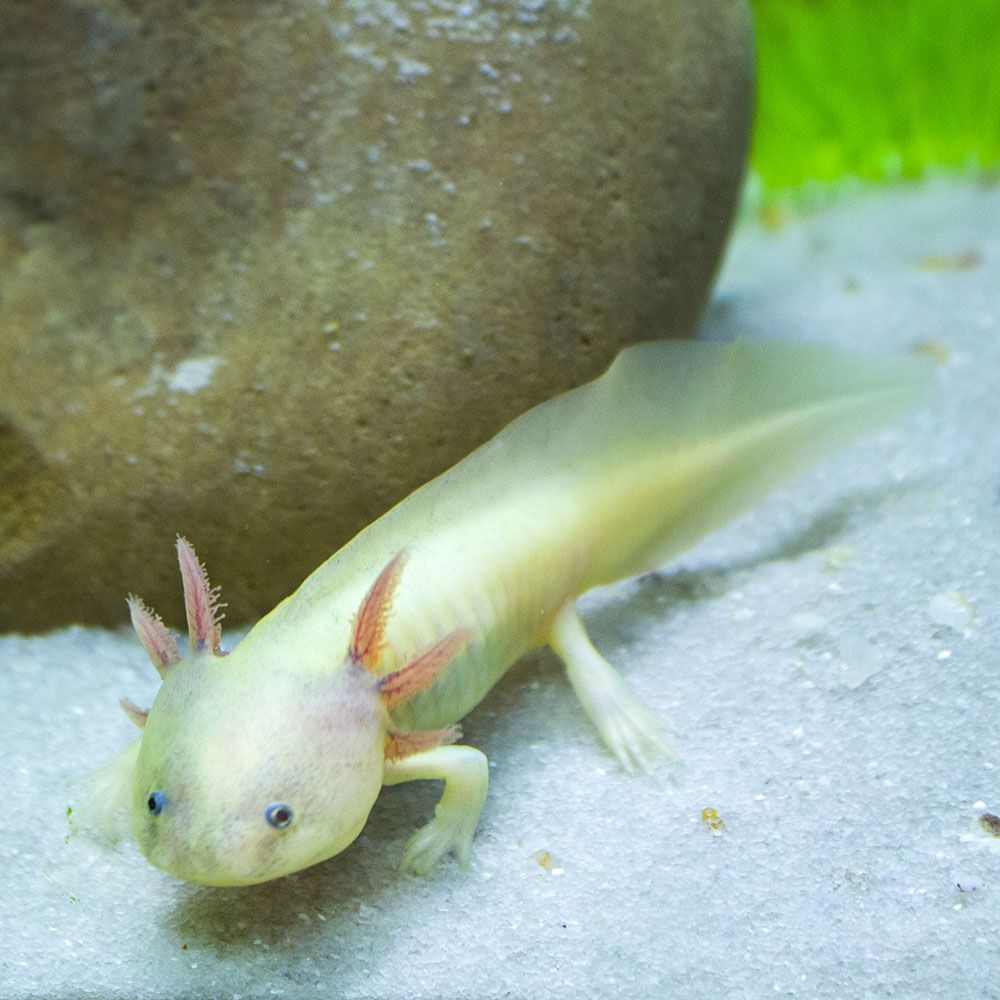
Albino axolotl is a popular and exotic type known for its almost transparent body, white color, and red gills, with pink or white eyes and golden dots on the gills.
It has various exotic color morphs, including:
- White axolotl: It has clear or red eyes and iridophores in their gills.
- Golden albino axolotl: It has a bright yellowish body, occasionally with transparent eyes and shiny stripes or dots.
- Copper axolotl: It exhibits a unique tannish tone with a coppery hue.
- Axanthic albino axolotl: It appears nearly white, with a subtle yellow hue developing with age.
- Melanoid albino: It has faint yellow xanthophores on the head and back.
- Golden red albino axolotl: It’s reddish-golden with red gills.
Albino axolotls occur naturally and are also lab-created by cross-breeding with albino tiger salamanders using nuclear transplantation and gonadal grafts. They are also treated with a special protein to create GFP, a glowing variant.
They are sensitive to light and have limited eyesight. Thus, they require gentle lighting and careful feeding.
4. Firefly Axolotl
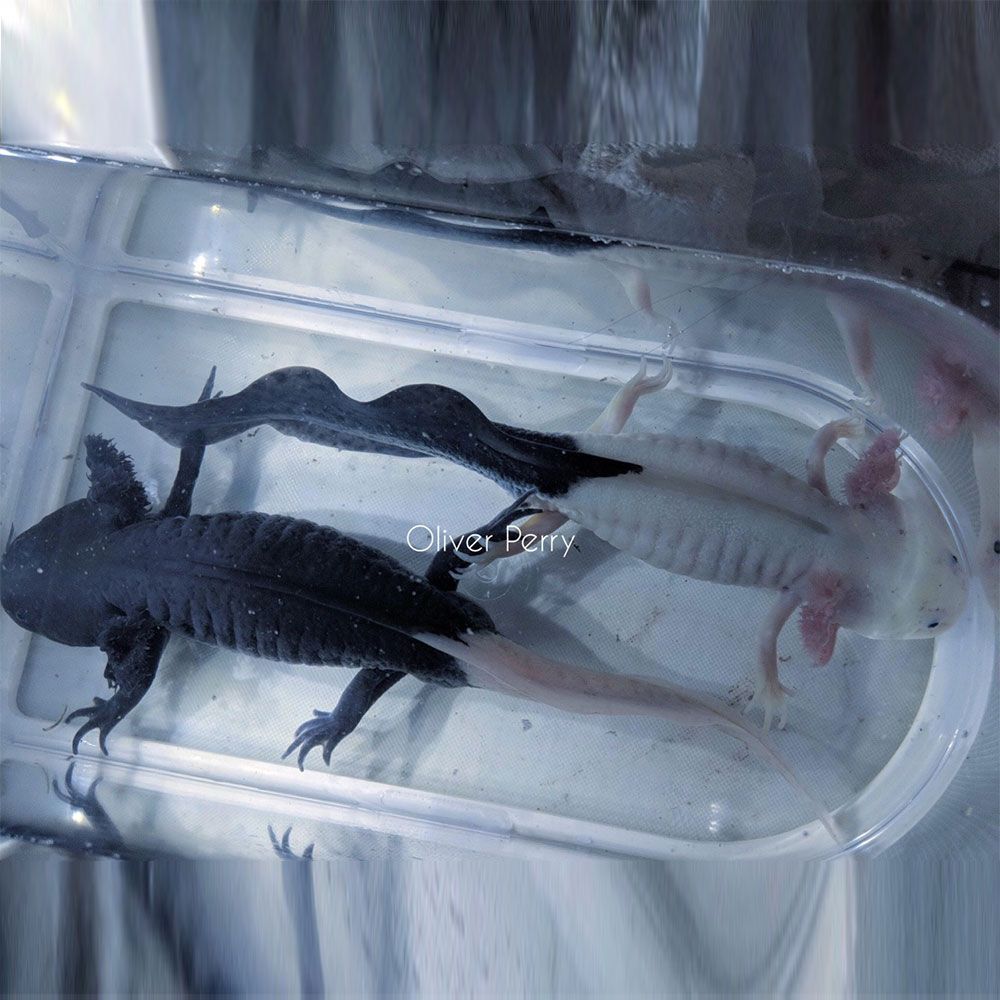
The firefly axolotls, an artificially created morph, feature dark bodies and a glowing green fluorescent protein albino (GFP) tail, resembling fireflies. They gently glow under blue or black lighting, resembling fireflies.
They were created by scientist Lloyd Strohl from the painless fusion of embryos, not tail-cutting. But nowadays, there are ethical concerns surrounding their creation. Nonetheless, they’re still popular in the market.
5. Lavender Axolotl
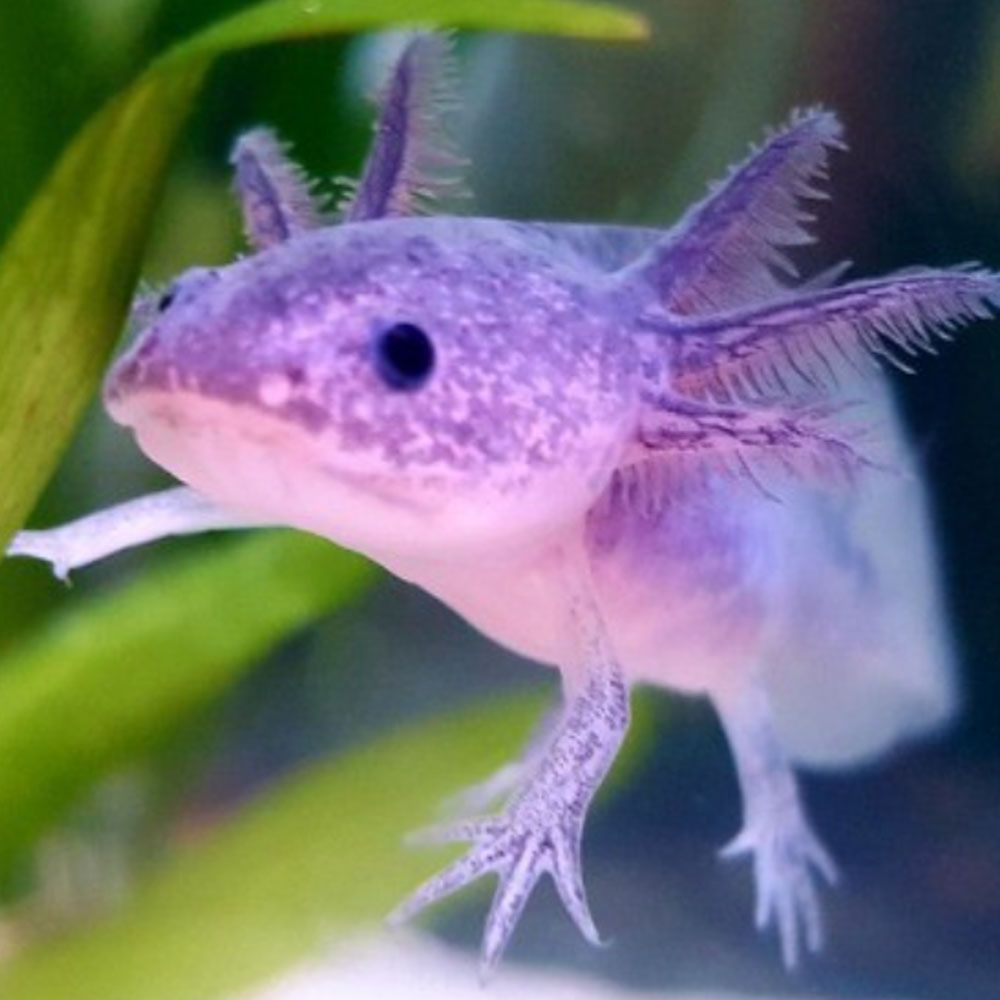
The lavender axolotl, also known as the silver Dalmatian, is a rare and distinctive variety characterized by its unique purple and silver coloring. This coloration results from excellent chromatophore crossover, creating a silver Dalmatian-like pattern on their skin.
Lavender axolotls have black eyes, gray-red gills, and numerous gray spots across their body, resembling a Dalmatian dog. As they age, their color may change to gray or green, but some retain their purple hue.
They’re quite rare and are not a result of scientific experiments. Much information about how it came into being is not available. But it’s a unique and sought-after variant among axolotl enthusiasts.
6. Leucistic Axolotl
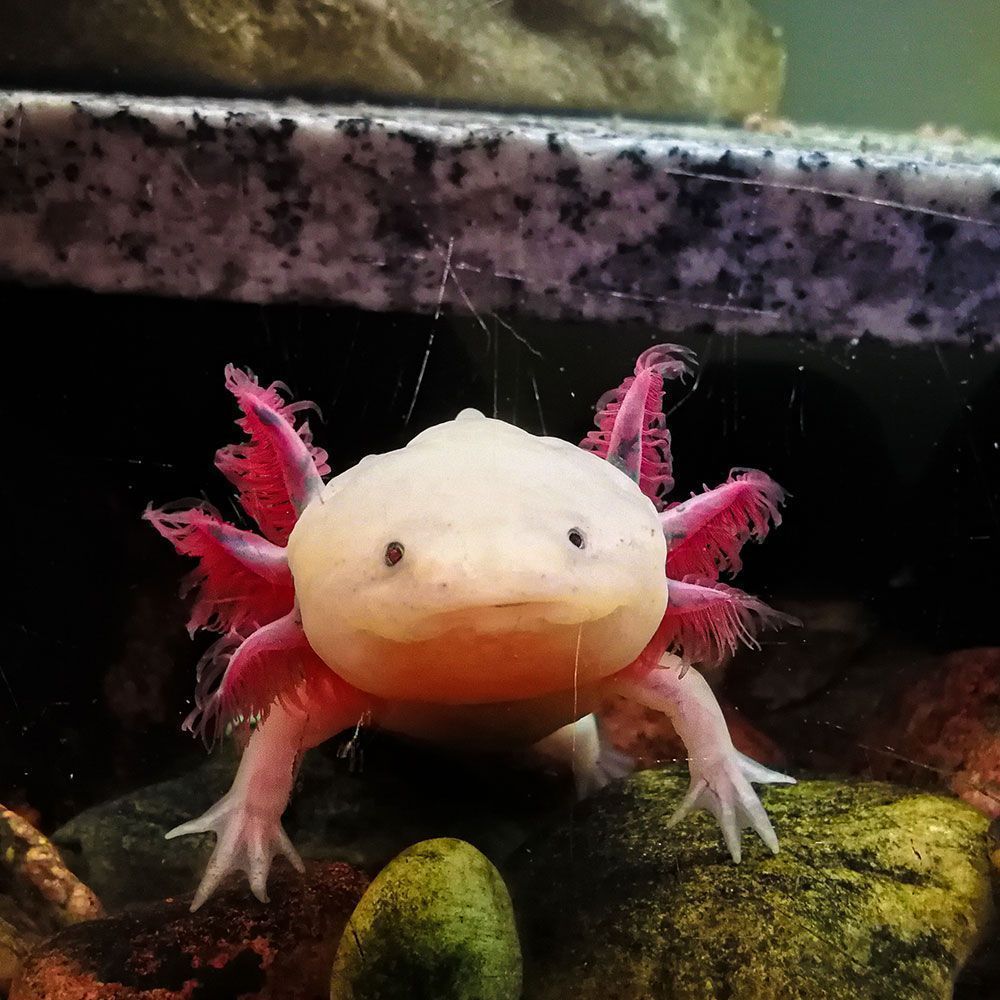
The leucistic axolotl, distinguished by its white color caused by a genetic mutation called leucism, lacks dark pigment-producing melanocytes.
These axolotls are completely white and have blue or black eyes and pink gills. Unlike albinos, they have dark eyes and may or may not have freckles.
Their bodies are translucent white with shiny gold dots. While rare in the wild due to visibility to predators, they are common in captivity. Their unique appearance makes them costly.
7. Mosaic Axolotl
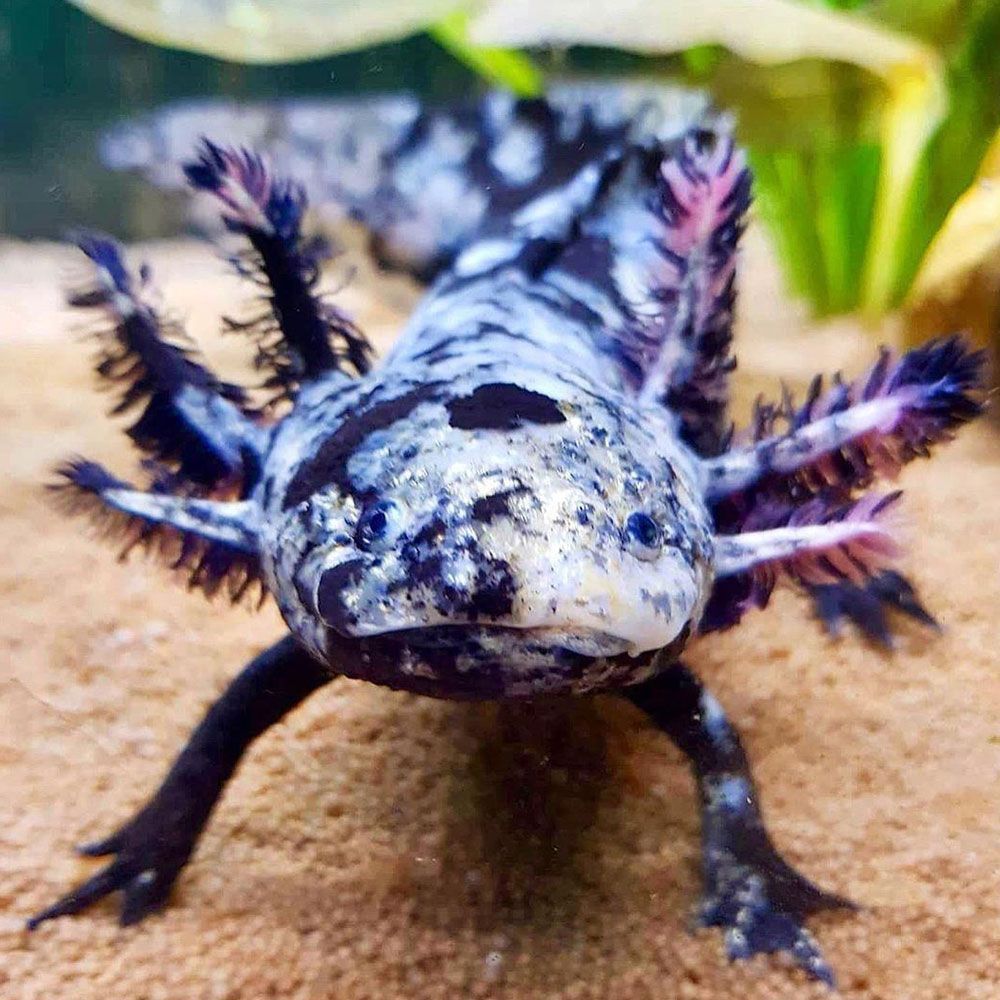
Mosaic axolotls feature distinctive black-and-white mottled patterns, often speckled with gold, red, and purple hues. These are a result of a blend of albino and melanoid morphs, creating their exceptional appearance. They occur naturally and can’t be bred easily.
They come in two types: marbled with colorful spots and random patterns and split with black and white or light pink divisions. Rare melanistic mosaic axolotls have black bodies and eyes.
Growing up to 10 inches, these amphibians require proper care, as genetic combinations may lead to health issues. They are infertile due to their random genetic composition, yet they’re deemed priceless among collectors.
8. Wild Axolotl
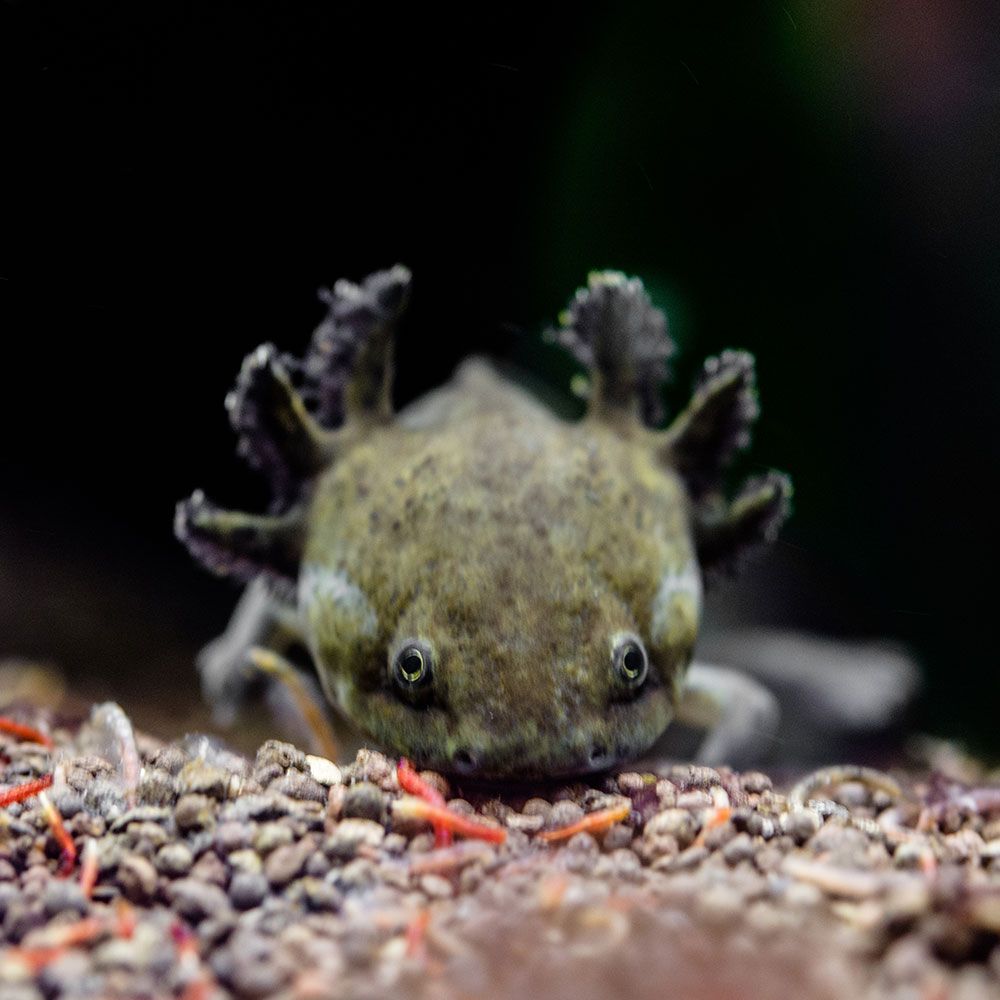
The wild-type axolotls are the most common and readily available. They have a dark brown or black body with gold or light brown speckling and have a light-colored belly.
These colors help them blend in with their surroundings and stay hidden. The disguise technique has been developed over many years as a survival strategy.
They possess fringed external gills and a distinctive caudal fin extending from the back of their heads.
9. Chimera Axolotl

Chimera axolotls are a unique variation resulting from the accidental fusion of two developing eggs. They display different colors and patterns on each side of their bodies.
There are three distinct types of chimeras as follows.
- Albino chimeras have white bodies and vibrant red eyes
- Pink-eyed chimeras feature noticeable stripes and pink eyes, making them highly prized.
- Heterozygous chimeras exhibit a blend of albino and pink-eyed traits.
These axolotls have a deeper body and a rounded head, with different colors on each side. They grow larger, up to 15 inches, and are identified by their multi-colored eyes and tails.
Due to their dual genomes, they often suffer from health issues, and there are ethical debates about their research and responsible breeding.
10. Piebald Axolotl

The piebald axolotl, a rare and creatively colored species, features unique pigmentation on its mid-body and sides, distinct from other variants.
These distinctive markings are caused by the movement of neural crest cells during early egg development, and the heritable piebald gene is responsible for this unique pattern.
They have thicker, darker black spots compared to spotty leucistic axolotls. Piebalds lack clear color groups but develop a distinctive black-and-white pattern as they age.
Originally captive-bred, these axolotls are genetically inheritable and found in some parts of New Zealand.
11. Enigma Axolotl
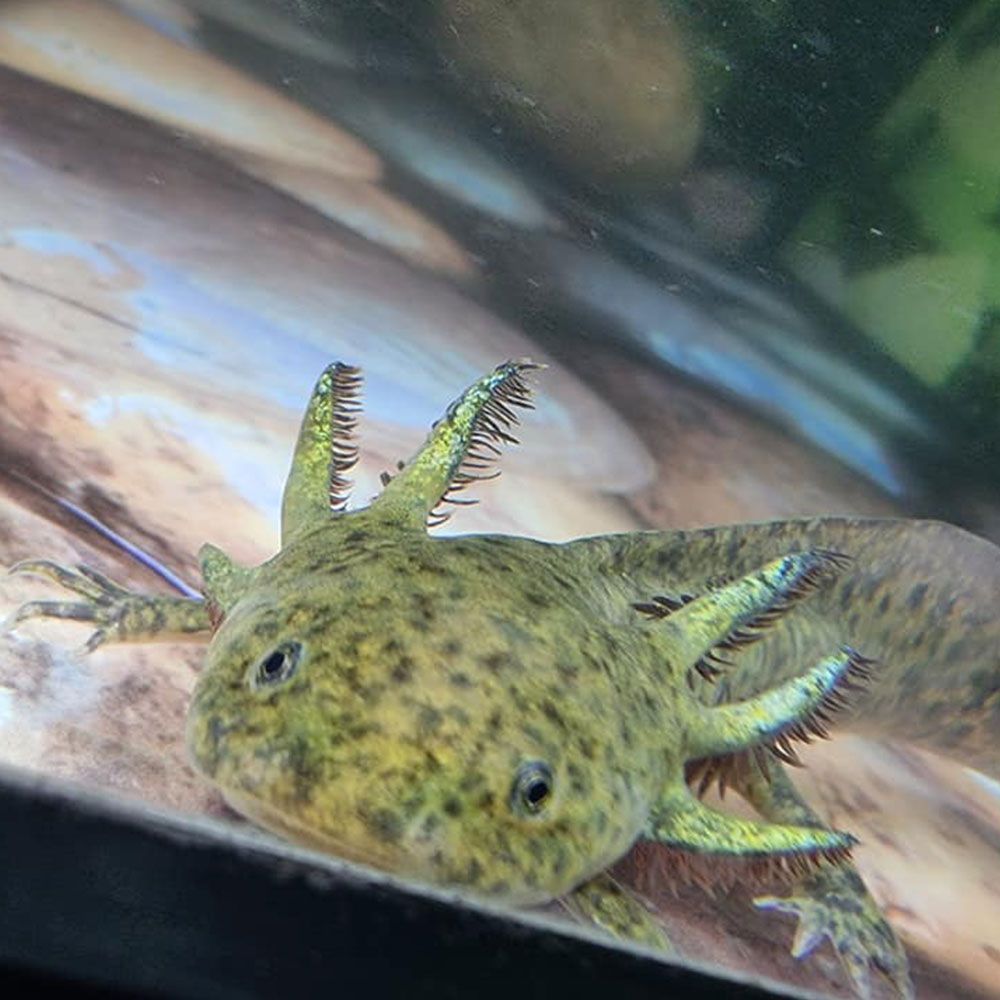
Enigma axolotls are an exceptionally rare axolotl morph, distinguished by their unique colors, including golden yellow, gray, black, white, and pink.
They have white bellies, toes, pale red gills, and bright golden patches all over their bodies. The presence of iridophores in their genes gives them a greenish-gray hue.
Moreover, their bodies darken as they age. The enigma variant’s origin remains a mystery, and attempts to intentionally breed them have proven challenging. This makes them exceptionally rare and rarely available for sale in the exotic pet market.
A word from FishInAquarium
Axolotls come in a wide range of colors. So, you have endless options to pick from. You can also read up more on some of these on the list.
And if you’re ready to adopt an axolotl, don’t forget to read our comprehensive care guide. Whether you want a common variety or a rare, unique morph, it’ll help you make informed decisions and create the perfect ambiance for them!
Hope this article provides valuable insights to you. And if it did, please share it with your fellow axolotl enthusiasts so you can enjoy raising them together!
Mail us if you have any further questions, and we will assist you right away.
Enjoy the wonders of the axolotl world!

